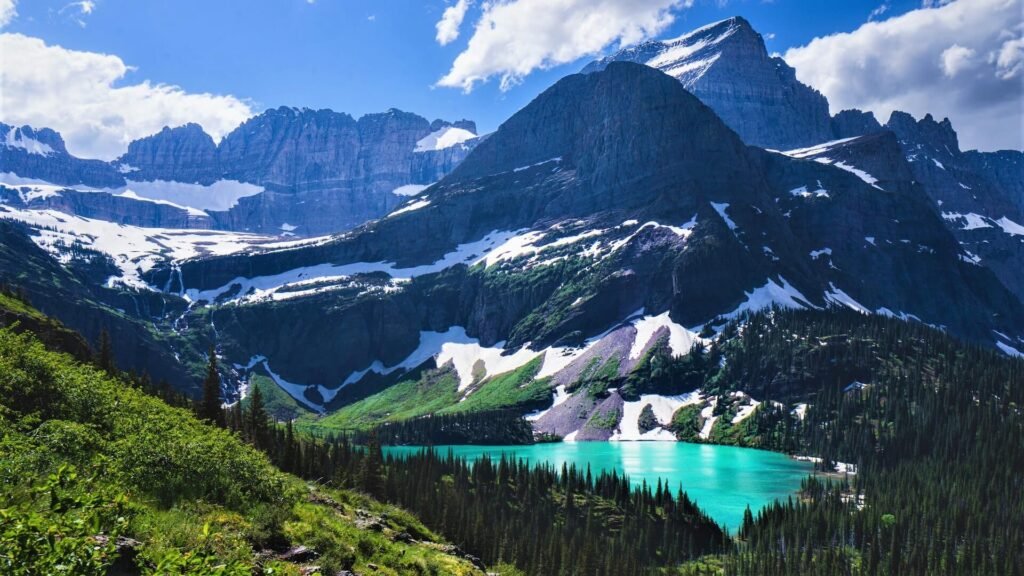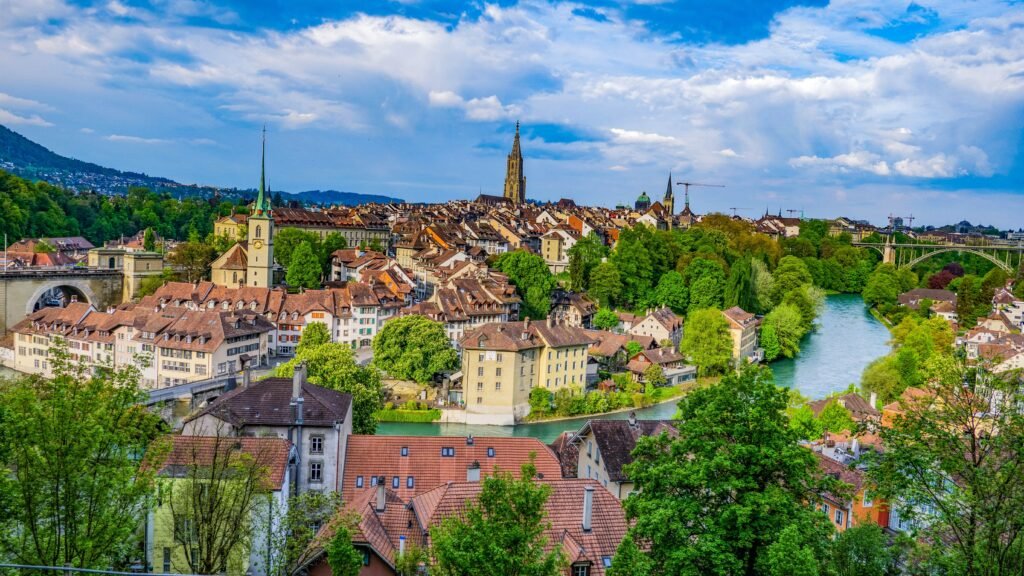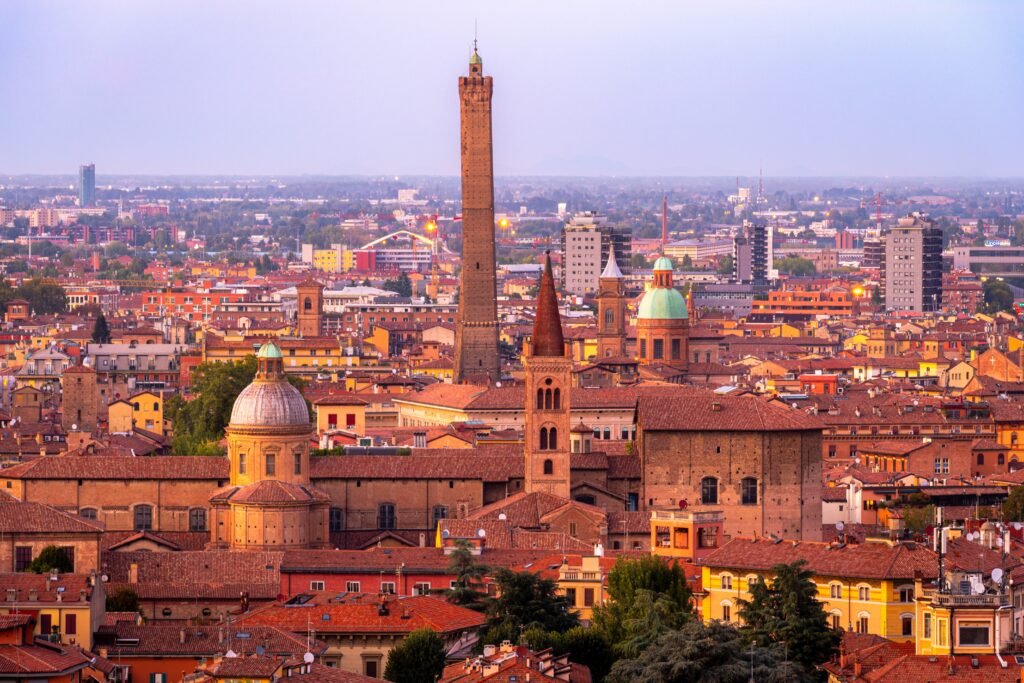Welcome to a world of pristine wilderness and breathtaking landscapes! Glacier National Park, located in the northwest corner of Montana, USA, is a true natural gem that beckons adventurers and nature enthusiasts alike. With its towering mountains, gleaming glaciers, turquoise lakes, and diverse wildlife, the park offers a unique experience that varies depending on the time of year you choose to visit. If you plan to come to Glacier National Park, look here for the best flights. Let’s embark on a journey through the seasons and discover the best time to explore this captivating destination.
Table of Contents
Summer (June to August): The Peak of Adventure
When the sun-kissed days of summer arrive, Glacier National Park truly comes alive with boundless opportunities for adventure and exploration. The months of June to August mark the peak of the tourist season, and for good reason. During this time, the park sheds its winter coat and reveals a vibrant tapestry of natural wonders that beckon travelers from all around the world. Here’s a deeper look into what makes summer a prime time to experience Glacier’s unparalleled beauty and excitement:
Ideal Weather and Accessibility: Summer brings milder temperatures to the park’s various elevations, making it the perfect time to explore its extensive network of hiking trails. The higher elevation trails, which may be snow-covered during other seasons, are now accessible, granting hikers the chance to venture into the heart of the mountains. The Going-to-the-Sun Road, a marvel of engineering that traverses the park’s core, is fully open, providing unparalleled scenic drives and access to iconic viewpoints.
Wildflower Extravaganza: As the snow melts away, the landscape transforms into a vibrant meadow of wildflowers. Blankets of lupines, Indian paintbrushes, and other alpine flowers paint the valleys and hillsides with a riot of colors. Hiking through these floral wonderlands is an experience that combines the beauty of the surroundings with the fragrant scents of the wilderness.

Abundant Wildlife Sightings: Summer is a time when Glacier’s diverse wildlife ventures out to bask in the warmth and abundance of the season. Keep your eyes peeled for sightings of grizzly bears, black bears, moose, elk, mountain goats, and bighorn sheep. You might spot these magnificent creatures grazing, roaming, or even scaling the rugged terrain, providing incredible wildlife photography opportunities.
Adventurous Hiking and Backpacking: Summer is a paradise for hikers and backpackers. The vast network of trails ranges from easy walks suitable for families to challenging alpine routes for experienced trekkers. The Highline Trail, one of the park’s most famous hikes, offers stunning vistas of the surrounding peaks and valleys. For those seeking an overnight wilderness experience, backcountry camping permits are available, allowing you to immerse yourself in the heart of the park’s untamed beauty.
Water Adventures: The park’s pristine lakes and rivers beckon water enthusiasts to indulge in various activities. Rent a kayak or canoe to paddle across the serene waters of Lake McDonald or St. Mary Lake, or try your hand at fishing to catch native trout species. Additionally, boat tours and scenic cruises provide a unique perspective of the park’s towering peaks and glaciers.
Ranger-Led Programs: Glacier National Park offers a range of ranger-led programs during the summer months. These programs include guided hikes, informative talks, and engaging activities that provide deeper insights into the park’s natural and cultural history. It’s a fantastic way to learn more about the ecosystem, geology, and fascinating stories that make Glacier unique.
Spectacular Sunsets: As the day winds down, the park’s landscapes are bathed in the warm glow of the setting sun. The play of light and shadow on the mountains, coupled with the vivid colors of the sky, creates a magical atmosphere that’s perfect for capturing stunning sunset photographs.
While summer is undeniably the peak of adventure in Glacier National Park, it’s also important to be prepared. The park can get crowded, and accommodations often fill up quickly. Make sure to plan your trip well in advance, pack layers to accommodate changing weather conditions, bring bear spray for safety, and adhere to Leave No Trace principles to preserve the park’s pristine beauty for generations to come. So, whether you’re embarking on a challenging hike, capturing the essence of wildflowers, or simply taking in the breathtaking views, summer in Glacier National Park promises an unforgettable journey into the heart of nature’s splendor.
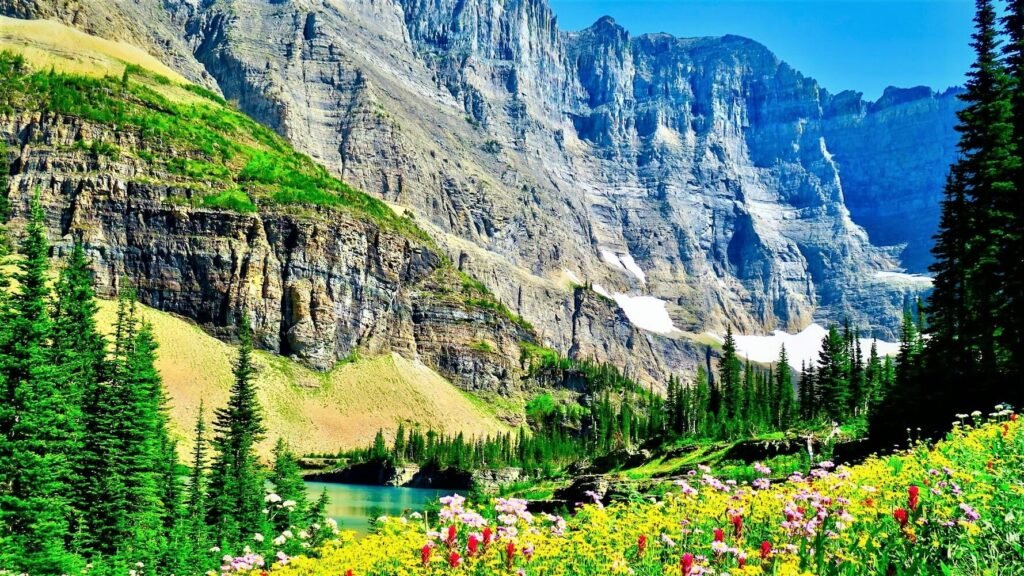
Fall (September to October): A Tranquil Escape
As the days grow shorter and a crispness lingers in the air, Glacier National Park undergoes a remarkable transformation during the fall months of September and October. This period offers a quieter, more contemplative experience that appeals to those seeking a tranquil escape amidst nature’s changing palette. Here’s a deeper exploration into what makes fall a truly enchanting time to visit Glacier National Park:
A Symphony of Colors: One of the most captivating features of fall in Glacier National Park is the changing foliage. The deciduous trees that dot the landscape burst into a symphony of reds, oranges, yellows, and golds. The sight of the vibrant leaves contrasting against the deep green of coniferous trees and the dramatic backdrop of rugged mountains creates a visual feast that’s a photographer’s dream.
Serenity and Solitude: Fall is considered the park’s shoulder season, meaning the summer crowds have dissipated, leaving behind a more serene and secluded environment. Trails that might have been busy during summer are now blissfully quiet, allowing you to immerse yourself in the tranquility of the natural world. The sense of solitude is especially pronounced as you explore the park’s pristine landscapes.
Crisp and Comfortable Weather: As the summer heat gives way to cooler temperatures, the weather becomes crisp and refreshing. This makes outdoor activities such as hiking, camping, and wildlife viewing all the more enjoyable. With fewer visitors around, you can often have popular trails and viewpoints all to yourself, enhancing the sense of connection with the wilderness.

Prime Wildlife Viewing: Fall is the season when many of Glacier’s wildlife species become more active in preparation for winter. Animals like elk, deer, and bighorn sheep engage in behaviors such as mating and migration during this time. Wildlife enthusiasts and photographers can take advantage of this period to witness fascinating animal behaviors and capture incredible shots of animals against the backdrop of fall colors.
Unique Photographic Opportunities: The soft, golden light of fall enhances the park’s already breathtaking landscapes. The interplay of light and shadows on the mountains, lakes, and forests creates an ethereal atmosphere that’s a delight for photographers. Whether you’re capturing reflections on a calm lake or the mist rising from the valleys, fall provides a wealth of unique photographic opportunities.
Engaging Interpretive Programs: Though fall is quieter in terms of visitors, the park still offers a range of interpretive programs led by rangers. These programs provide insights into the park’s natural and cultural history, giving you a deeper understanding of the ecosystem, geology, and stories that have shaped the area.
Stargazing and Night Sky Viewing: With longer nights and clear skies, fall is an excellent time for stargazing in Glacier National Park. The absence of light pollution in the park’s remote location allows for a truly mesmerizing celestial experience. If you’re lucky, you might even catch a glimpse of the Northern Lights dancing across the night sky.
As you plan your fall trip to Glacier National Park, keep in mind that the weather can be more variable compared to summer, and some higher elevation trails might close earlier due to snowfall. It’s important to be prepared with warm clothing, sturdy hiking gear, and a sense of adventure. The quieter ambiance and the breathtaking visual spectacle of fall make it a rewarding season for those seeking a more intimate connection with the park’s natural beauty. Whether you’re taking a leisurely hike through the fall foliage, listening to the rustling leaves, or simply marveling at the wonder of nature’s transition, fall in Glacier National Park promises a tranquil escape like no other.
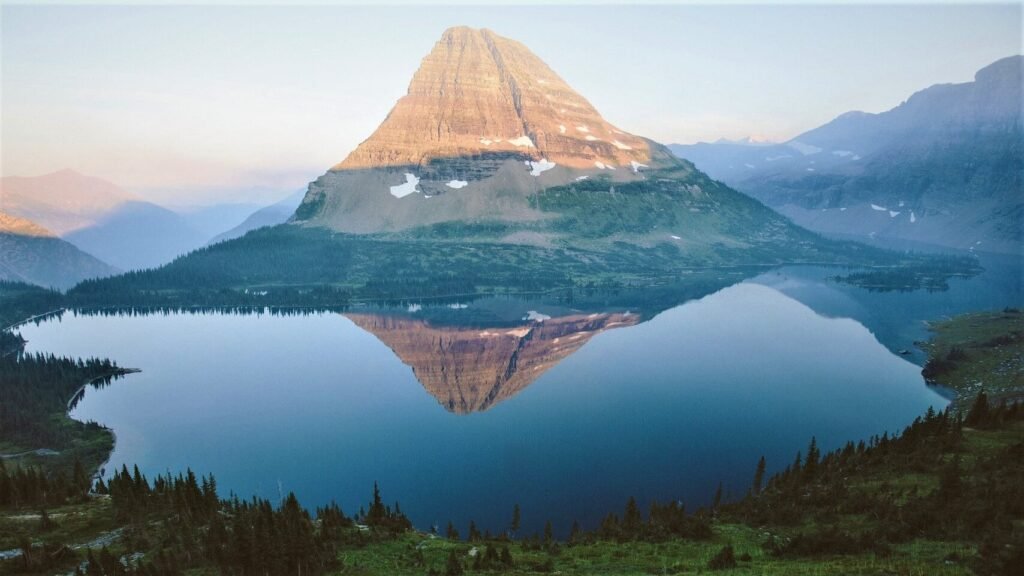
Winter (November to March): A Snowy Wonderland
When the landscape is blanketed in a glistening layer of snow and the air carries a crisp chill, Glacier National Park transforms into a breathtaking winter wonderland. From November to March, the park undergoes a metamorphosis, offering a unique and serene experience that’s cherished by those who seek adventure in a snowy paradise. Here’s a closer look at what makes winter a truly magical time to visit Glacier National Park:
Tranquil Solitude: Winter is a season of serenity and solitude in the park. The crowds that flock during the warmer months are replaced by a peaceful ambiance, allowing you to fully immerse yourself in the beauty of the snowy landscapes. The sense of isolation creates an opportunity for introspection and a deeper connection with nature.
Cross-Country Skiing and Snowshoeing: With many of the park’s higher elevation trails covered in snow, winter offers a unique chance to explore on cross-country skis or snowshoes. Trails that were once bustling with hikers are now quiet pathways through pristine snow-covered forests. The popular Going-to-the-Sun Road is closed to vehicles during winter, but it becomes a groomed track for cross-country skiers, offering an unparalleled winter adventure.
Guided Snowshoe Walks: The park’s rangers offer guided snowshoe walks during the winter months. These interpretive programs provide insight into the park’s ecology, wildlife, and winter survival strategies. It’s an excellent opportunity to learn while enjoying the snow-covered landscapes.
Wildlife Tracking: The snow provides an artistic canvas upon which the movements of wildlife are etched. Animal tracks crisscross the snow-covered ground, telling stories of their journeys and behaviors. With a keen eye, you might be able to identify tracks of animals such as foxes, rabbits, and even elusive predators like lynx and wolves.
Photography Paradise: The stark beauty of winter landscapes presents photographers with a unique challenge and reward. The play of light on snow and ice, the contrast of dark evergreens against pristine snow, and the dramatic silhouettes of mountains against the winter sky create stunning compositions that are a testament to nature’s artistry.
Northern Lights Spectacle: While not guaranteed, Glacier National Park’s remote location and dark skies provide an opportunity to witness the mesmerizing dance of the Northern Lights. This natural phenomenon is a rare and captivating sight that’s made all the more magical in the quiet of the winter wilderness.
Cozy Lodging and Firelit Evenings: The park’s lodges and accommodations offer a cozy respite from the cold, with crackling fireplaces and warm interiors that provide a welcoming retreat after a day of outdoor exploration. Enjoying a cup of hot cocoa or a hearty meal while looking out at the snowy landscapes is an experience to savor.
Winter Safety and Preparation: Visiting Glacier National Park in winter requires careful planning and preparation. Weather conditions can be severe, and some areas of the park may be inaccessible due to heavy snowfall. It’s crucial to dress in layers, bring appropriate gear, and be aware of the challenges that come with winter exploration.
While winter in Glacier National Park may be less conventional and more demanding in terms of planning, the rewards are boundless. It’s a time when the park reveals a side of itself that few get to witness—a serene, untouched expanse of snow and ice that captivates the senses and allows for a deep connection with the natural world. Whether you’re gliding through snowy trails on skis, marveling at the starry night sky, or simply reveling in the tranquility of the snow-covered landscapes, winter in Glacier National Park promises an unforgettable and truly unique adventure.
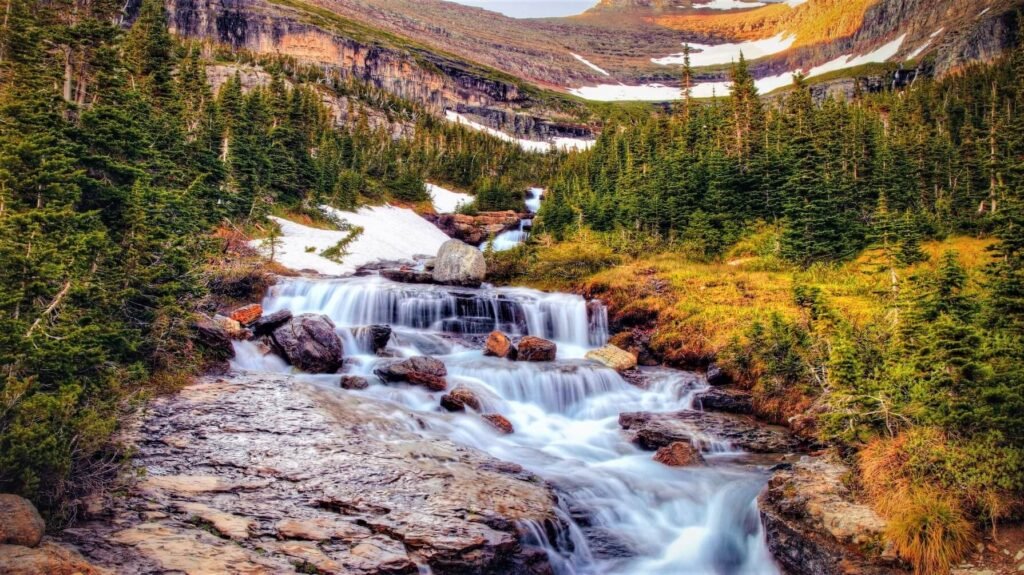
Spring (April to May): The Awakening of Nature in Glacier National Park
As the grip of winter loosens and the first signs of life begin to emerge, Glacier National Park transforms into a realm of renewal and rebirth during the spring months of April and May. This period marks the awakening of nature from its winter slumber, offering a unique opportunity to witness the transition from snow-covered landscapes to blooming meadows. Here’s a deeper exploration of what makes spring a captivating time to experience the park’s natural wonders:
Melting Snow and Flowing Water: Spring sees the gradual melting of the winter snowpack, breathing life into the park’s rivers, streams, and waterfalls. The rush of melting snow creates powerful cascades and roaring rapids, adding an exciting auditory element to the awakening landscape. Some trails might be temporarily impassable due to swollen waterways, but this also adds to the dynamic beauty of the season.
Wildflower Spectacle: One of the most remarkable features of spring in Glacier National Park is the emergence of wildflowers. As the snow recedes, alpine meadows burst forth with a vibrant tapestry of colors. Indian paintbrushes, glacier lilies, buttercups, and other native blooms carpet the hillsides and valleys, creating a breathtaking scene that’s perfect for photographers and nature enthusiasts.

Birdsong and Wildlife Activity: With the return of warmth, the park becomes a symphony of birdsong as migratory birds return from their winter migrations. Birds such as mountain bluebirds, song sparrows, and red-winged blackbirds fill the air with their melodies. Additionally, wildlife becomes more active as animals like bears, deer, and elk emerge from their winter dens and forage for food.
Transition of Scenery: Spring showcases the park in a state of transformation. The lower elevation trails begin to clear, offering hikers a chance to explore the lower reaches of the mountains. At higher elevations, snow might still be present, but you’ll witness the gradual retreat of winter as alpine landscapes begin to emerge from their icy cover.
Cooler Temperatures and Fewer Crowds: Spring is a shoulder season in Glacier National Park, which means fewer crowds compared to the bustling summer months. The cooler temperatures and the absence of large crowds create an ideal setting for those seeking a more tranquil and immersive experience.
Special Photography Opportunities: Spring’s changing landscapes provide unique photographic opportunities. Capturing the delicate balance between the lingering snow and the blossoming wildflowers creates stunning contrasts that tell the story of the season’s transition. The soft, diffused light of spring enhances the already breathtaking scenery, making it a paradise for photographers.
Ranger-Led Programs and Learning: Ranger-led programs continue in spring, offering insights into the park’s ecological processes, animal behaviors, and the effects of seasonal transitions. Participating in these programs can deepen your understanding and appreciation of the natural world.
Weather Considerations: It’s important to note that spring weather can be quite variable in Glacier National Park. While lower elevation trails may be accessible, higher elevation trails might still be covered in snow. It’s advisable to check with park officials or visitor centers for the latest trail conditions and prepare for potential weather changes.
Spring in Glacier National Park offers a front-row seat to the spectacle of nature’s rebirth. Whether you’re captivated by the delicate beauty of wildflowers, the melodies of returning birds, or the stunning landscapes that shift from winter to spring, this season is a time of discovery and wonder. As you plan your visit, be sure to embrace the dynamic conditions of spring and revel in the magic of the awakening wilderness.

best time to visit glacier national park: Conclusion
The best time to visit Glacier National Park depends on your preferences and what kind of experience you’re seeking. Summer offers a plethora of outdoor activities and access to the park’s iconic sites. Fall provides a serene escape with stunning foliage. Winter transforms the park into a snowy paradise for those seeking solitude and unique winter activities. Spring is a transitional period, perfect for witnessing nature’s awakening.
No matter when you choose to visit, Glacier National Park promises a memorable adventure and a deep connection with the natural world. For a safe trip, get the best travel insurance. So, lace up your hiking boots, pack your camera, and get ready to create lasting memories in this breathtaking wilderness.

You can find all our blogs here.
